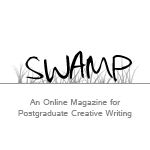Simply Shrimp in Silica
Joanne Davy (IIML, Victoria University of Wellington, New Zealand)
.
.
One particularly dull day, when time dragged and there was nothing interesting to be viewed on YouTube, a girl felt compelled to try and imagine a creature that would appeal to engineers, architects and romantics alike. Her inner biologist conjured a picture of a slender tube with no obvious animal features. Comprised of a lacy network of fibres, the tube was fixed to the seabed, bathed in the cold dark water of oceanic abyss. The girl had inadvertently imagined the Venus’ Flower Basket sponge, which dwells in the deepest depths of the Western Pacific.
These are the facts that make the hearts of structural engineers race: the sponge’s seemingly delicate borosilicate skeleton is in fact immensely strong; it has to be, to withstand the enormous pressure in the deep ocean. The microlayer structure of sponge glass means that it is not brittle, like the man-made version, and the horizontal and vertical arrangement of the glass fibre bundles gives strength to the skeleton, protecting the structure from torsion. Curved ridges on the outside provide yet more protection from collapse, and overall the sponge skeleton incorporates seven levels of structural hierarchy. These hierarchies correspond to fundamental construction principles commonly applied, for example, in high-rise building construction. (Now architects are starting to feel tingly all over too).
The glass fibres possess an important additional property that is of interest to the mysterious breed of scientists known as nanotechnologists. An undoubted source of frustration to these boffins is that optical fibre production techniques require high temperature, resulting in fibres that are brittle. The threads attaching the sponge to the ocean floor also have excellent optical properties, but are less brittle and are produced at low temperature. If they could be recreated in a laboratory, it would be possible to develop more efficient and less costly solar cells. Such a development would have obvious benefits to mankind, and nanotechnologists around the globe would rejoice in ways that only they know how.
In her imagining, the girl also placed a pair of shrimp inside the sponge. Too big to swim out into the waters of the abyss, the creatures are destined to remain together forever within their glassy prison.
True biologists understand that tiny shrimp larvae are able to penetrate holes in the sponge skeleton and soon become too large to escape. The male and female shrimp live their entire lives in symbiosis with the sponge, trading cleaning for protection and food provision. Their miniscule offspring are able to exit through the holes and find sponge homes of their own. The symbolism of this relationship is not lost on certain Asian cultures, where the sponge is sometimes given as a wedding gift.
The girl was humbled when she came to understand that this sponge, formed in the dark of the deep ocean, is surely one of nature’s most ingenious designs. And, for the rest of the day, she was happy.
.
.
Jo Davy will shortly complete an MA in Creative Writing at Victoria University of Wellington and an extract from her novel-in-progress is published in Turbine 09. Prior to studying at VUW, Jo completed a PhD in Marine Biology in Australia, and landscape and nature are important focuses of her writing. She currently lives in Wellington, where rockpooling opportunties abound.






